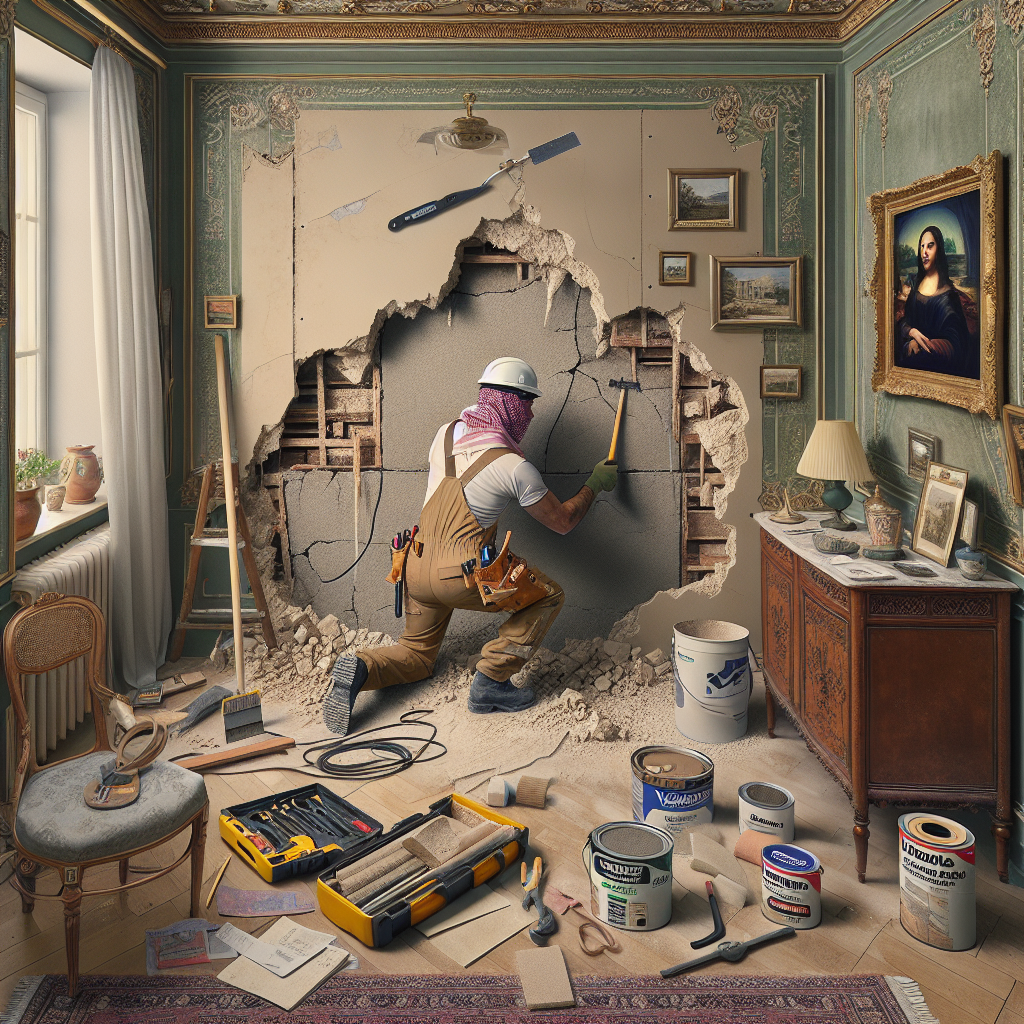
Drywall Repair in Vienna A Critical Step Before Repainting
Drywall Repair
Are you planning to give your home in Vienna, VA a fresh coat of paint? Before you do so, it is important to ensure that your walls are in good condition. One crucial step in achieving a smooth, flawless paint job is repairing any damage to your drywall. Drywall, also known as plasterboard or wallboard, is a popular material used for constructing interior walls and ceilings in homes and commercial buildings. It is a durable and cost-effective option, but over time it can suffer wear and tear, resulting in cracks, holes, and other forms of damage. As a homeowner in Vienna, VA, it is important to understand the importance of repairing your drywall before repainting it.
The Importance of Repairing Drywall
Here are some reasons why repairing your drywall is a critical step before repainting: 1. Aesthetics: Undoubtedly, one of the main reasons for repainting your walls is to enhance the aesthetic appeal of your home. However, if your drywall is damaged, painting over it will only result in a subpar finish. Cracks, holes, and dents in your drywall will show through the paint, ruining the overall look of your walls. 2. Smooth Finish: Drywall repair involves filling in any cracks or holes with compound and then sanding it down for a smooth finish. A smooth and even surface is crucial for achieving a professional-looking paint job. If your drywall is not repaired, the uneven surface will cause the paint to appear uneven as well. 3. Longevity of Paint: Repainting your walls is a time-consuming and costly task, and you want the results to last as long as possible. Repairing your drywall before painting it ensures that the paint adheres properly and lasts longer. Otherwise, the paint may start to peel or crack, requiring you to repaint sooner than expected. 4. Prevent Further Damage: Small cracks and holes in your drywall can worsen over time if left unattended. This can lead to more extensive damage, making the repair process more complicated and costly. Repairing drywall at the first sign of damage can prevent it from escalating and save you both time and money in the long run.
The Drywall Repair Process
Drywall repair can be a DIY project for small, simple issues, but for larger or more complex damage, it is best to hire a professional. Here are the basic steps involved in the drywall repair process: 1. Preparation: Before you begin repairing your drywall, you need to clear the area and cover any furniture or flooring to protect them from dust and debris. It is also helpful to have all necessary tools and materials on hand, including drywall compound, sandpaper, and a putty knife. 2. Filling in Damaged Areas: For small holes, you can use a patch kit to fill in the damaged area. For larger holes or cracks, first use a utility knife to clean and smooth the edges. Then, apply drywall compound with a putty knife, and allow it to dry before applying additional layers if needed. 3. Sanding: After the compound has dried, use sandpaper to smooth out the repaired areas. This will give the wall a smooth finish and help the patch blend in with the rest of the wall. 4. Prime and Paint: Once the repairs are completed and the walls are smooth, it is important to prime the area before painting. Primer helps the paint adhere to the surface and improves its durability. After priming, you can paint your walls as usual.
Conclusion
In conclusion, drywall repair is a critical step that should not be overlooked before repainting your walls. It improves the overall appearance of your home, ensures a










